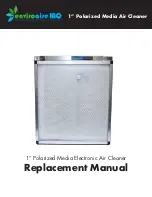
49
8. UNIT SELECTION
OUTDOOR UNITS
8. UNIT SELECTION
8-1. Indoor and outdoor unit selection
(1) Selecting indoor units
(2) Selecting outdoor units
1) Calculate the thermal road of each room.
2) Based on the thermal load corrected for indoor unit return air temperature, select appropriate indoor unit models.
Refer to the correction factor diagram for the outdoor unit whose capacity is the closest to the total thermal load of the
system (Qi). Refer to “CAPACITY TABLES (Indoor unit)” and “6. CAPACITY TABLES.”
3) Calculate the total capacity of the indoor units in the system (N).
1) Based on the total capacity of the indoor units (N), tentatively select the capacity of the outdoor unit (X).
The total capacity of the indoor units to be connected to a given outdoor unit (N) should not exceed the maximum
connectable capacity of the outdoor unit.
2) The tentatively selected standard capacity of the outdoor unit (X) will be defined as Qs.
* If the total capacity of the indoor units that are connected to a given outdoor unit exceeds 100% of the outdoor unit
capacity (X), refer to the outdoor unit partial load capacity table, find the capacity that corresponds to the total capacity
N, and use it as the standard outdoor unit capacity (Qs).
3) Obtain the maximum outdoor unit capacity (Qm) by multiplying Qs (standard outdoor unit capacity) by the following
correction factors: piping length, outside air temperature, and defrost (heating).
Find the piping length correction factor from the diagram that corresponds to the total indoor unit capacity (N).
4) Make sure the maximum outdoor unit capacity Qm is equal to or greater than the total thermal load Qi.
If Qm is smaller than Qi, reconsider the outdoor unit capacity (X) so that Qm ≥ Qi will hold true.
5) After selecting indoor and outdoor units, calculate the apportioned indoor unit capacity, and make sure that the formula
"Thermal load ≤ Indoor unit capacity" will hold true for each room.
If the thermal load exceeds the indoor unit capacity in one or more rooms, increase the indoor unit size as long as doing so
will not exceed the maximum connectable capacity of the outdoor unit. Then, start over from step 1) above. If the
maximum connectable capacity is exceeded by increasing the indoor unit capacity, increase the outdoor capacity as well,
then start over from step 1) above.
Qm = Qs x Piping length correction factor x Outside air temperature correction factor
x Defrost correction factor (heating only) x Pipe diameter correction factor
Outside air temperature correction factor
Piping length correction factor
Defrost correction factor (heating only)
Pipe diameter correction factor (applicable only if non-standard size pipes are connected)
Refer to 6-1.
Refer to 6-3.
Refer to 6-4.
Refer to 8-3.
Calculate the indoor/outdoor unit capacities and check for unit compatibility by
considering both the heating and the cooling loads. If the formula Qm ≥ Qi does not
hold true for either cooling or heating, reconsider the outdoor unit capacity (X).
Содержание PUHY-RP-Y(S)JM-B
Страница 1: ...DATA BOOK AIR CONDITIONERS MODEL PUHY RP Y S JM B PURY RP YJM B ...
Страница 3: ......
Страница 63: ...60 OUTDOOR UNITS ...
Страница 191: ...188 INDOOR UNITS ...
Страница 243: ...240 SYSTEM DESIGN ...
Страница 287: ...284 SYSTEM DESIGN ...
















































